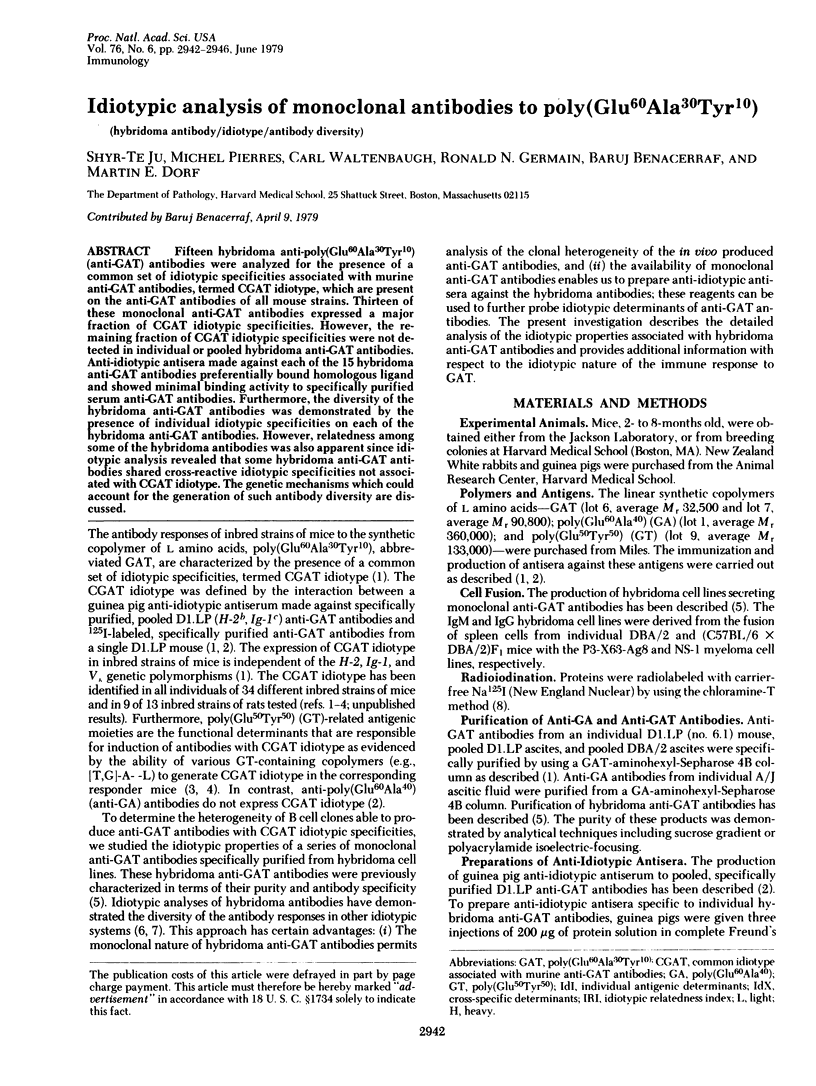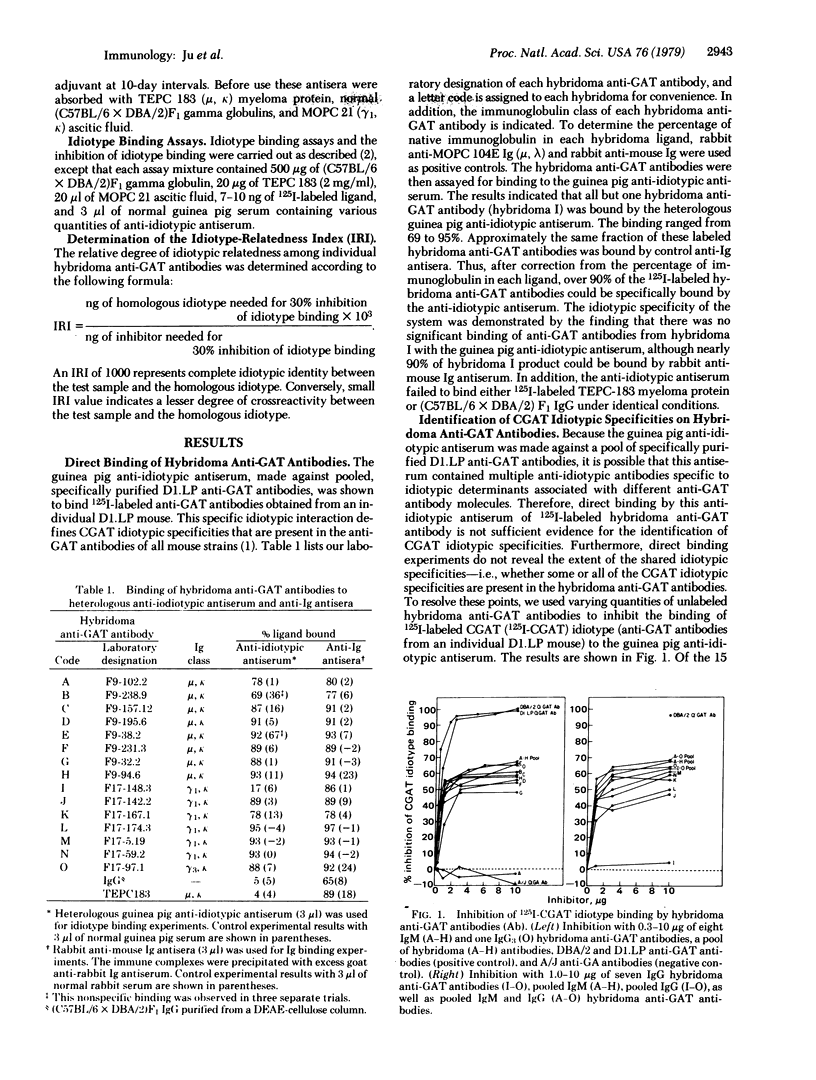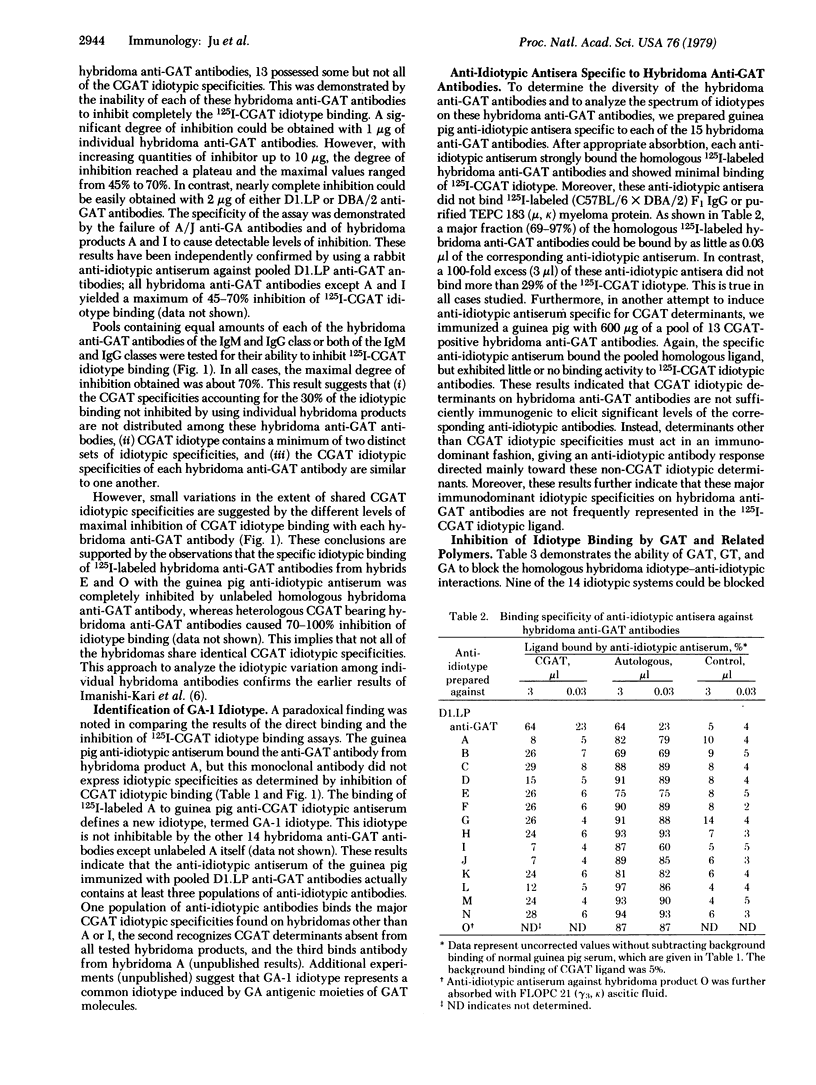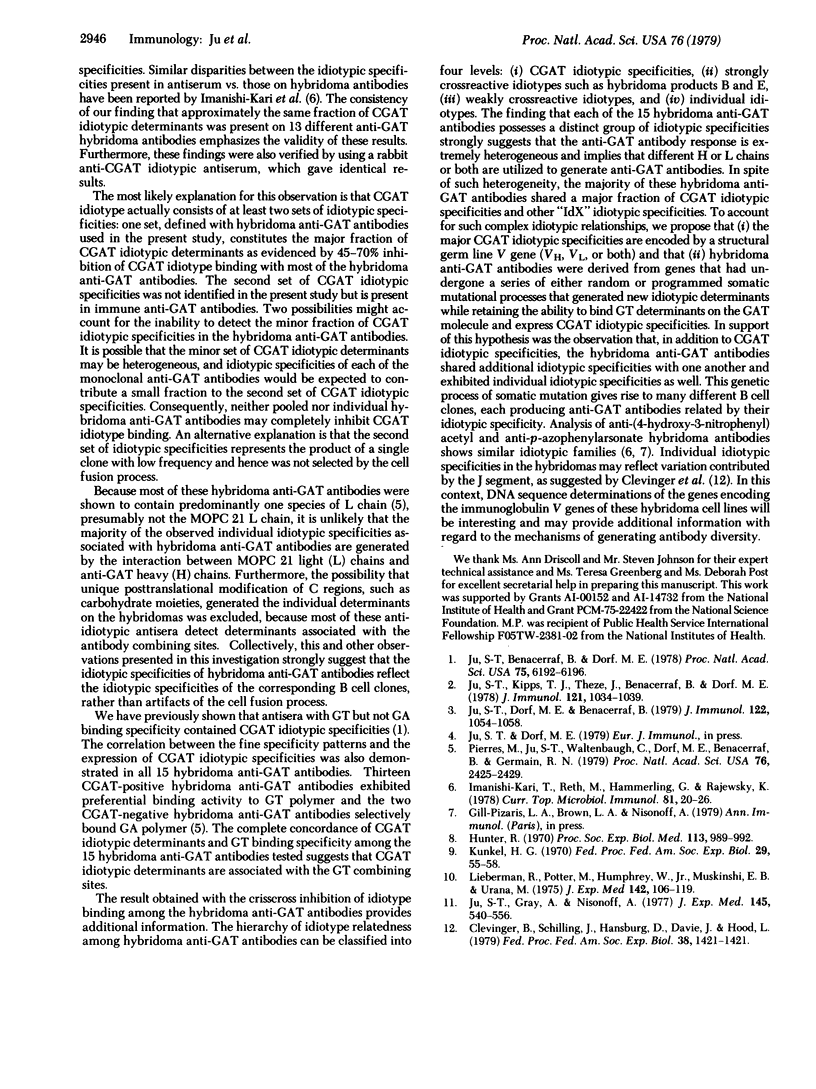Abstract
Fifteen hybridoma anti-poly(Glu60Ala30Tyr10) (anti-GAT) antibodies were analyzed for the presence of a common set of idiotypic specificities associated with murine anti-GAT antibodies, termed CGAT idiotype, which are present on the anti-GAT antibodies of all mouse strains. Thirteen of these monoclonal anti-GAT antibodies expressed a major fraction of CGAT idiotypic specificities. However, the remaining fraction of CGAT idiotypic specificities were not detected in individual or pooled hybridoma anti-GAT antibodies. Anti-idiotypic antisera made against each of the 15 hybridoma anti-GAT antibodies preferentially bound homologous ligand and showed minimal binding activity to specifically purified serum anti-GAT antibodies. Furthermore, the diversity of the hybridoma anti-GAT antibodies was demonstrated by the presence of individual idiotypic specificities on each of the hybridoma anti-GAT antibodies. However, relatedness among some of the hybridoma antibodies was also apparent since idiotypic analysis revealed that some hybridoma anti-GAT antibodies shared cross-reactive idiotypic specificities not associated with CGAT idiotype. The genetic mechanisms which could account for the generation of such antibody diversity are discussed.
Full text
PDF




Selected References
These references are in PubMed. This may not be the complete list of references from this article.
- Hunter R. Standardization of the chloramine-T method of protein iodination. Proc Soc Exp Biol Med. 1970 Mar;133(3):989–992. doi: 10.3181/00379727-133-34611. [DOI] [PubMed] [Google Scholar]
- Imanshi-Kari T., Reth M., Hämmerling G. J., Rajewsky K. Analysis of V gene expression in the immune response by cell fusion. Curr Top Microbiol Immunol. 1978;81:20–26. doi: 10.1007/978-3-642-67448-8_3. [DOI] [PubMed] [Google Scholar]
- Ju S. T., Benacerraf B., Dorf M. E. Idiotypic analysis of antibodies to poly(Glu60Ala30Tyr10): interstrain and interspecies idiotypic crossreactions. Proc Natl Acad Sci U S A. 1978 Dec;75(12):6192–6196. doi: 10.1073/pnas.75.12.6192. [DOI] [PMC free article] [PubMed] [Google Scholar]
- Ju S. T., Dorf M. E., Benacerraf B. Idiotypic analysis of anti-GAT antibodies. III. Determinant specificity and immunoglobulin class distribution of CGAT idiotype. J Immunol. 1979 Mar;122(3):1054–1058. [PubMed] [Google Scholar]
- Ju S. T., Kipps T. J., Theze J., Benacerraf B., Dorf M. E. Idiotypic analysis of anti-GAT antibodies. I. Presence of common idiotypic specificities in both responder and nonresponder mice. J Immunol. 1978 Sep;121(3):1034–1039. [PubMed] [Google Scholar]
- Ju S., Gray A., Nisonoff A. Frequency of occurrence of idiotypes associated with anti-p-azophenylarsonate antibodies arising in mice immunologically suppressed with respect to a cross-reactive idiotype. J Exp Med. 1977 Mar 1;145(3):540–556. doi: 10.1084/jem.145.3.540. [DOI] [PMC free article] [PubMed] [Google Scholar]
- Kunkel H. G. Experimental approaches tohomogenous antibody populations. iIndividual antigenic specificity, cross specificity and diversity of human antibodies. Fed Proc. 1970 Jan-Feb;29(1):55–58. [PubMed] [Google Scholar]
- Lieberman R., Potter M., Humphrey W., Jr, Mushinski E. B., Vrana M. Multiple individual and cross-specific indiotypes on 13 levan-binding myeloma proteins of BALB/c mice. J Exp Med. 1975 Jul 1;142(1):106–119. doi: 10.1084/jem.142.1.106. [DOI] [PMC free article] [PubMed] [Google Scholar]
- Pierres M., Ju S. T., Waltenbaugh C., Dorf M. E., Benacerraf B., Germain R. N. Fine specificity of antibodies to poly(Glu60Ala30Tyr10) produced by hybrid cell lines. Proc Natl Acad Sci U S A. 1979 May;76(5):2425–2429. doi: 10.1073/pnas.76.5.2425. [DOI] [PMC free article] [PubMed] [Google Scholar]


